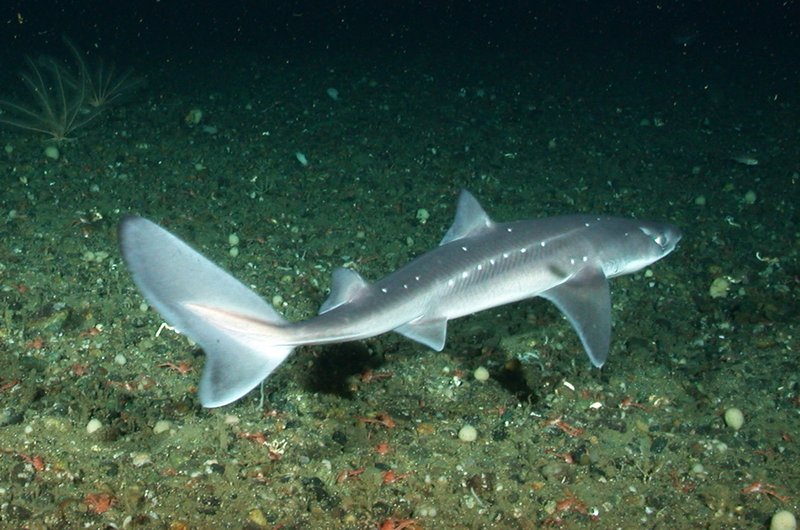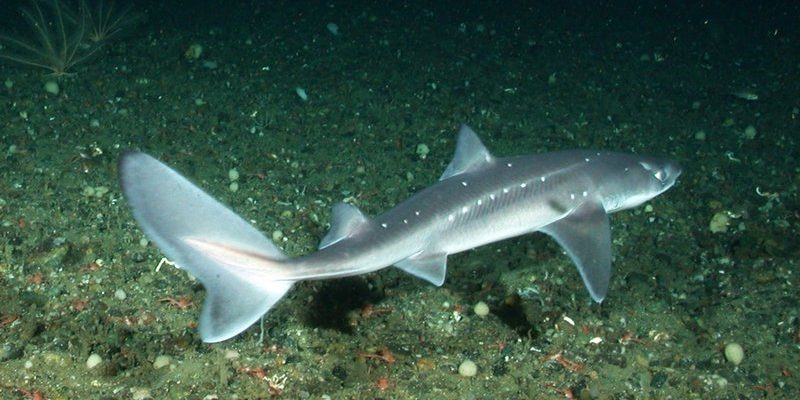
You might picture a dogfish as some kind of furry creature, but that’s a big misconception! Dogfish are actually a type of shark. They belong to the family Squalidae and are known for their slender bodies and distinctive, pointed snouts. Imagine a tiny, sleek shark gliding through the water—these creatures have mastered the art of stealthy swimming and are often the unsung heroes of their underwater ecosystems.
There are several species of dogfish, with the most common being the spiny dogfish (Squalus acanthias). These sharks are notable not just for their appearance but also for their impressive adaptability and resilience in various marine environments. They have been around for millions of years, serving as a reminder of just how diverse and ancient our oceans are.
Whether you’re a fan of marine life or just curious about the ocean’s inhabitants, understanding dogfish can give you a whole new appreciation for these creatures. They play important roles in their habitats, and knowing more about them helps us understand the delicate balance of marine ecosystems.
Physical Characteristics of Dogfish
Dogfish are quite distinctive in their appearance. Typically, they measure between two to four feet in length, though some species can reach up to five feet. Their bodies are elongated and covered in small dermal denticles, which give them a rough texture—a sort of natural armor. If you were to touch a dogfish, you might be surprised at how different it feels compared to other fish.
One of the standout features of dogfish is their dorsal spines. These spines are sharp and can be quite painful if you’re not careful—almost like nature’s own defense mechanism. They use these spines to ward off predators. Think of it like wearing a suit of armor; it helps them navigate through their world with an edge against danger.
Color-wise, dogfish usually sport a grayish-brown hue with lighter spots or bands that help them blend into their surroundings. This camouflage is crucial for hunting and evading larger predators. When they feel threatened, they can quickly dart away into the depths of the ocean, thanks to their streamlined bodies that allow for swift movement.
Habitat and Distribution
Dogfish thrive in a variety of marine environments, but they prefer colder waters. They are commonly found in the North Atlantic Ocean, from the warm coastal waters of New Jersey to the chilly reaches of northern Canada. Surprisingly, dogfish can also tolerate deeper waters, sometimes diving down to 3,000 feet. They love to hang out around rocky bottoms and sandy areas, where they can easily hunt for food.
What’s fascinating is how adaptable dogfish are. They can be found in both coastal regions and deeper offshore waters. This versatility makes them successful hunters, allowing them to exploit different feeding grounds depending on the season. Think of them as oceanic nomads, always on the move to find the best places to hunt and thrive.
Interestingly, dogfish are also known to migrate. During spring, they tend to move closer to shore to breed, while in winter, they might swim to deeper waters in search of warmer temperatures. This seasonal change is crucial for their reproductive cycle and survival, showing just how intertwined they are with their environment.
Diet and Feeding Habits
When it comes to food, dogfish are opportunistic feeders. They primarily feast on smaller fish, squid, and crustaceans. Picture a dogfish swimming through the water, its keen senses picking up the faintest vibrations from its prey. Their excellent sense of smell helps them track down meals, even from a distance. They are stealthy hunters, often stalking their prey before lunging in for the catch.
Dogfish are also known for their unique hunting method. They tend to hunt in schools, which adds an element of teamwork to their feeding. By hunting in groups, they can corner and overwhelm larger schools of fish, making it easier to snag a meal. It’s impressive to see how these marine creatures use both individual skills and cooperative strategies to thrive.
Interestingly, while dogfish are effective hunters, they are not at the top of the food chain. Larger sharks and marine mammals see them as a tasty treat. However, their spiny defenses help them avoid becoming someone else’s dinner. This delicate balance of predator and prey plays an essential role in the ocean’s ecosystem, showcasing nature’s intricate web of life.
Reproduction and Lifespan
Dogfish have a unique and interesting reproductive strategy. They are ovoviviparous, which means that the eggs develop inside the female until they are ready to hatch. After a gestation period of about 18 to 24 months, the female dogfish gives birth to live young, known as pups. This unusually long gestation period is one of the longest among sharks and highlights the commitment dogfish have to ensuring the survival of their species.
Upon birth, dogfish pups are usually about a foot long. They are relatively independent from the get-go and quickly find their way to the ocean floor, where they seek shelter in rocks and crevices. This early independence is crucial, as it helps them evade predators in their vulnerable stages of life.
In terms of lifespan, dogfish are known to live for about 20 to 30 years in the wild. However, their lifespan can be impacted by various factors, including environmental conditions and fishing pressures. Consequently, they face threats from overfishing and habitat loss, which affect their population numbers and overall health in the oceans.
Conservation Status and Threats
The conservation status of dogfish is a mixed bag. While some species, like the spiny dogfish, are currently categorized as near threatened due to overfishing, others are doing relatively well. Overfishing poses a significant threat to their populations, as they are often caught for their meat and fins. This demand has led to stricter regulations in various regions, but illegal fishing still occurs.
Moreover, habitat degradation due to pollution and climate change further threatens their survival. As ocean temperatures rise and ecosystems change, dogfish and many other marine species struggle to adapt. You might think of the ocean as a vast, unchanging expanse, but it’s actually very dynamic and sensitive to human impact.
Conserving dogfish requires a multifaceted approach. Strict fishing regulations, habitat protection, and public awareness campaigns are critical to ensuring their survival. Organizations are working hard to educate communities about the importance of dogfish and their role in the ocean, helping to inspire a sense of responsibility towards marine life.
Interesting Facts About Dogfish
| Common Name: | Dogfish |
| Scientific Name: | Squalus acanthias |
| Size: | 2 to 5 feet in length |
| Weight: | Up to 20 pounds |
| Habitat: | Coastal and deeper waters of the North Atlantic |
| Diet: | Smaller fish, squid, crustaceans |
| Lifespan: | 20 to 30 years |
Dogfish in Culture and Cuisine
Dogfish have also found their way into human culture. Although they might not be as popular as other types of fish, they are appreciated in some regions. In Europe, for example, dogfish meat has been consumed for centuries. It’s often prepared in a similar way to other fish in dishes like fish and chips. You might be surprised to learn that they can provide a tasty and nutritious option for those seeking alternative seafood choices.
In some culinary circles, dogfish are celebrated for their firm, white flesh and versatility in cooking. Chefs can prepare them in a variety of ways, including grilling or baking, and they hold up well in stews and soups. They are often used as a more sustainable seafood choice, especially when compared to overfished species. So, if you’re ever looking for something a little different to bring to your dinner table, dogfish could be an exciting option!
However, it’s crucial to be aware of the sustainability of fish consumption. Checking local fisheries and guidelines ensures that you’re making responsible choices when it comes to seafood. Eating sustainably sourced dogfish not only supports your local economy but also contributes positively to marine conservation efforts.
FAQ
Are dogfish dangerous to humans?
Generally, dogfish are not considered dangerous to humans. While they are capable of biting if provoked, they are relatively shy and tend to avoid contact with people. Their small size and non-aggressive nature make them less of a threat compared to larger shark species. However, as with any wild animal, it’s best to observe them from a distance to ensure both your safety and theirs.
Can dogfish live in freshwater?
No, dogfish are marine fish and thrive in saltwater environments. They are not adapted to live in freshwater, which can be detrimental to their health. The salinity of their natural habitat is crucial for their physiological processes, so dogfish typically remain in oceanic regions and do not migrate to freshwater bodies.
How do dogfish reproduce?
Dogfish reproduce through a process called ovoviviparity, where the female carries the eggs inside her body until they hatch. After a long gestation period, the mother gives birth to live pups. This method of reproduction ensures that the young sharks are more developed and ready to face the challenges of the ocean when they are born.
What do dogfish eat?
Dogfish are opportunistic feeders that primarily eat smaller fish, squid, and crustaceans. They are skilled hunters, using their keen senses to locate prey. By hunting in schools, they can corner fish and efficiently capture meals, making them effective predators in their habitats.
Do dogfish have any natural predators?
Yes, dogfish do have natural predators. Larger sharks, marine mammals, and even some birds can prey on dogfish. They use their spiny defenses to protect themselves from being eaten, but they still need to be cautious of these predators as they navigate their underwater world.
How long do dogfish live?
Dogfish have a lifespan of about 20 to 30 years in the wild, although various factors can affect their longevity. Environmental conditions, availability of food, and fishing pressures all play a role in determining how long these fascinating creatures can thrive.
Are dogfish protected by law?
In some regions, dogfish are subject to protective regulations due to their threatened status from overfishing. Laws vary by location, so it’s essential for fishers and consumers to be aware of local restrictions on harvesting dogfish to help support their populations and ensure sustainability.
What is the difference between dogfish and other sharks?
Dogfish differ from other shark species mainly in size and behavior. They are small, agile sharks that are known for their unique features such as dorsal spines. Unlike larger sharks, dogfish are not apex predators and often hunt in groups. Their adaptations allow them to thrive in cold marine environments, setting them apart from more common shark species.
Where can you find dogfish?
Dogfish are primarily found in the North Atlantic Ocean, often in coastal areas and deeper waters. They tend to inhabit rocky bottoms and sandy regions, showing a preference for colder waters. During certain times of the year, they migrate closer to shore to spawn before returning to deeper waters.
Can dogfish be harmful to the ecosystem?
Dogfish play an important role in their ecosystem by helping to maintain the balance of marine populations. As predators, they control the numbers of smaller fish and other marine creatures, which in turn supports the overall health of the ocean. However, if their populations decline significantly, it can lead to an imbalance in their environment, affecting other species and the marine food web.
Are dogfish sustainable to eat?
Dogfish can be a sustainable seafood choice, especially when sourced from well-managed fisheries. They are often considered a more eco-friendly option compared to overfished species. However, it’s important to verify sustainability certifications and buy from reputable sources to make responsible choices that support marine conservation efforts.

